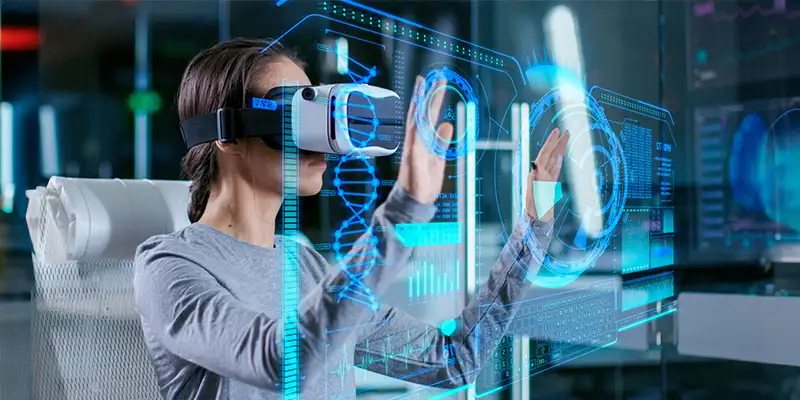By Thomas Dal
In an era of rapid technological evolution, design education is undergoing a significant transformation. Design institutions are increasingly integrating advanced technologies such as Augmented Reality (AR), Virtual Reality (VR), Artificial Intelligence (AI), and 3D printing into their curricula. This integration is essential to equip students with the skills and knowledge needed to thrive in the future landscape of design, where technology and creativity are increasingly intertwined.
Immersive Learning with AR and VR
AR and VR technologies are revolutionizing the way students engage with design concepts. These tools offer immersive experiences that enhance understanding of spatial awareness, materiality, and the interaction of design elements within a simulated real-world context. For example, in transportation design, VR allows students to experience the interior of a vehicle in a virtual environment, refining aesthetics and functionality before creating any physical model. Similarly, AR overlays digital information onto the physical world, bridging the gap between theory and practice, and fostering an environment of experimentation and innovation.
Enhancing Creativity with AI
AI is reshaping design education by assisting in pattern recognition, trend analysis, and providing predictive insights that influence design decisions. By incorporating AI into the curriculum, design schools are teaching students to use these technologies to enhance their creativity rather than replace it. For instance, in product design, AI can suggest modifications based on user behavior data, enabling the creation of more functional and intuitive products. Additionally, AI automates mundane tasks, freeing students to focus on the more creative and complex aspects of design, thus improving efficiency and empowering deeper exploration of design challenges.
Accelerating the Design Process with 3D Printing
3D printing has revolutionized the prototyping phase of design by enabling the rapid production of models with high accuracy and lower costs. In educational settings, this technology allows students to quickly turn digital designs into physical models, providing immediate feedback and enhancing the iterative design process. This is particularly beneficial in fields like product and transportation design, where the functionality and feasibility of designs can be tested and refined repeatedly without significant financial investment.
Preparing for a Technology-Driven Industry
The integration of these technologies into design education mirrors broader industry trends, where the boundaries between technology and design are increasingly blurring. As industries adopt more technology-driven approaches, design schools must prepare students to be proficient not only in traditional design skills but also in these emerging technologies. This not only boosts their employability but also equips them to be innovators and leaders in the design field.
Furthermore, by emphasizing technology, educational institutions foster an environment of continuous learning. As technology evolves, so must curricula, encouraging both educators and students to be perpetual learners, constantly adapting to new tools and methodologies.
Conclusion
The incorporation of AR, VR, AI, and 3D printing into design education is more than just a trend; it is a necessary evolution aligned with the future of the design industry. By embracing these technologies, design schools are not only enhancing the educational experience but also ensuring that students are ready to meet the challenges and opportunities of a rapidly changing professional landscape.
(Thomas Dal is the Dean of Strate School of Design.)











